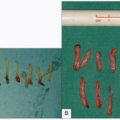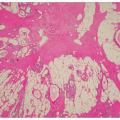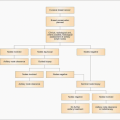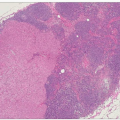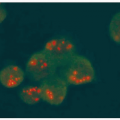Anatomy and Physiology of the Breast
|
The mammary gland is a distinguishing feature of mammals and its primary role is to produce milk to nourish offspring. In humans, the breast has a multitude of further roles including being a major female sexual characteristic and a key part of female body image.
The breast develops within the superficial fascia of the anterior chest wall. Prior to puberty, both in men and women, the breast consists only of a few ducts within a connective tissue stroma. True breast development (thelarche) begins in females at puberty around the age of 10 years under the influence of oestrogen and progesterone. The breast is hemispherical in shape with an extension towards the axilla and becomes more pendulous with age. It extends from around the level of the second rib to seventh rib in the midclavicular line and from the lateral edge of the sternum to the midaxillary line. It overlies the pectoralis major, serratus anterior, and rectus abdominis muscles. Strands of fibrous connective tissue (Cooper’s ligaments) run from the skin overlying the breast to the underlying chest wall providing a supportive framework.
The breast contains 12-15 major breast ducts which drain to the nipple, connected to a series of branching ducts ending in the terminal duct lobular unit, the functional milk-producing unit of the breast. Breast ducts are lined by a layer of cuboidal cells surrounded by a network of myoepithelial cells supported by connective tissue stroma, and are embedded in a variable amount of fat. The major subareolar breast ducts open on the surface of the nipple, which protrudes from the breast surface. The nipple and surrounding areola are variably pigmented and their skin is rich in smooth muscle fibres.
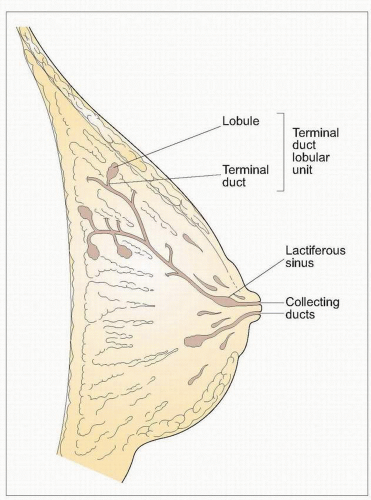 1.1 Breast anatomy. 12-15 ducts open at the nipple from the ductal system of the breast, which originates in the milk-producing functional unit – the terminal duct lobular unit. |
Stay updated, free articles. Join our Telegram channel

Full access? Get Clinical Tree



